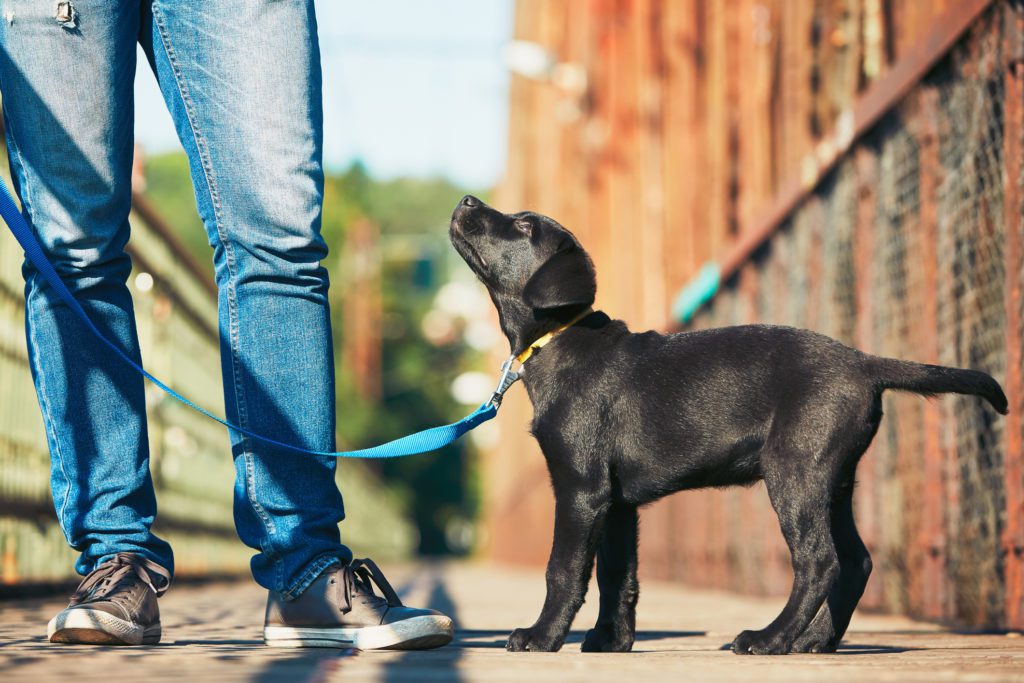
Though dogs can’t talk, our pets manage to tell us plenty. Gestures, movements, noises, grunts, and facial expressions tell us everything from how they feel to how hungry they are. And, one of the most important for their humans to understand: I need to go out. Now! But what happens if your housetrained pet doesn’t cue you when he has to relieve himself? How can you prevent accidents? Don’t worry: you and your dog will be saved by the bell.
What We Have Here is a Failure to Communicate – or Do We?
If your dog relieves himself near doorways, it’s a good bet that he just can’t tell you he needs to go out. He waits, and waits, until he can wait no more.
But if you notice accidents in other places throughout your house, your dog may have medical issues that keep him from controlling his bladder and bowels. He may have bladder stones, diabetes, kidney disease, age-related incontinence, urinary tract infection, or a simple upset tummy. Talk to your vet to rule out serious problems.
If he’s healthy as a horse (or a dog?), then he may not be fully housetrained or he may be scent-marking to “claim his territory.” The ASPCA has some great resources to help you with both of these issues.
If the problem is a lack of dog/owner communication, though, head to your nearest craft store. You’ll see why!
Wanna Go Out?
At the craft store, pick up a few sleigh bells, sturdy string, and a hook. Make a quick trip to the pet or grocery store for some treats, and you’re ready to go.
Back at home, hold the bells a few inches from your dog’s nose so he can sniff them. Once his nose touches the bell, say “Yes!” This teaches him that ringing the bell is a good thing – and it’ll earn him a treat. Repeat this several times until he’s comfortable with the bells. Slowly move the bells further away. Say “Touch.” Reward your dog for a job well done.
Spend a week or so on these prep moves. After that, place the hook near your door and use the string to attach the bells. Call your dog to the door, and hold onto the bells. Say “Touch.” When your dog’s nose touches them, say “Yes!” Don’t forget the treat! Repeat this several times. Your dog should learn to touch the bell when you say “Touch.”
Next, practice saying “Touch” without holding the bells. This may take a while but most dogs learn quickly with consistency – and plenty of treats.
Ok, great work so far! Now it’s time to teach your dog that touching the bells means “I gotta go!” Next time you take your dog out to relieve himself, tell him to touch the bells. When he does, say “Yes!” Then open the door, and out you go. Give him ample praise, and after he goes, give him a treat.
Every time you go out, repeat this process. With repetition, he’ll learn to go to the bells when he needs to go out.
Some dogs learn a little too well. They start ringing the bell when they want to go out – whether they need to relieve themselves or not. To prevent this, praise him when he rings the bell and bring him outside to his designated “potty area.” Give him a few minutes to do his business. When he does, reward him and bring him back in. If he doesn’t just bring him back in. That’ll teach him that the bell is for bathroom breaks only.
Bell training is one more way dogs can communicate clearly and effectively with their humans. With patience, time, and treats, you can quickly teach your dog to say, “I need to go out.”


